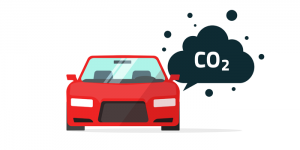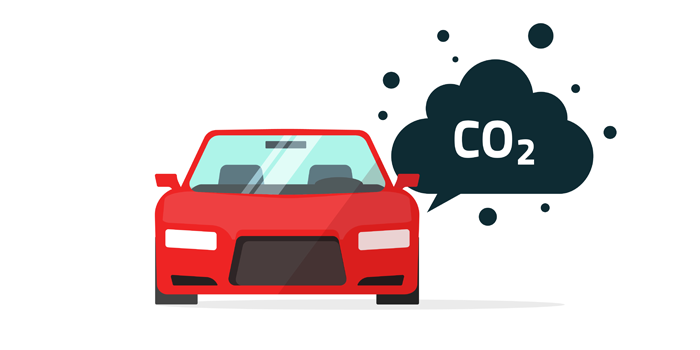The White House wants to cut U.S. greenhouse gas (GHG) emissions by 80 percent by 2050, but the goal raises questions about one of the greatest sources of those pollutants: light-duty vehicles. The Energy Department’s National Renewable Energy Laboratory (NREL) has taken a close look at what specific combination of measures national experts have determined is needed to slash LDV emissions from 1,514 million metric tons (MMTs) to 303 MMTs of carbon dioxide (CO2) per year and meet this larger emissions-reduction goal.
 Just lowering gasoline consumption in conventional vehicles with internal combustion engines will not be enough to meet these GHG emissions targets, NREL says. A recent review of scientific and engineering literature by Chris Gearhart, director of NREL’s Transportation & Hydrogen Systems Center, explores the potential that advances in internal combustion engines, hydrogen fuel cell vehicles and battery electric vehicles have to significantly decrease GHG emissions when paired with the adoption of alternative low-carbon energy sources.
Just lowering gasoline consumption in conventional vehicles with internal combustion engines will not be enough to meet these GHG emissions targets, NREL says. A recent review of scientific and engineering literature by Chris Gearhart, director of NREL’s Transportation & Hydrogen Systems Center, explores the potential that advances in internal combustion engines, hydrogen fuel cell vehicles and battery electric vehicles have to significantly decrease GHG emissions when paired with the adoption of alternative low-carbon energy sources.
In the U.S. transportation sector, light-duty vehicles account for 63 percent of petroleum use and 61 percent of GHG emissions. If travel patterns continue to increase at the current rate, the number of vehicles and the distance they travel, known as “vehicle-kilometers traveled” (VKT), are projected to reach 6.3 trillion kilometers by 2050.The significant time lag between vehicle technology development and commercial deployment makes multiple strategies even more crucial in attempts to reduce transportation-related energy use and GHG emissions.
NREL transportation expertise helps government, industry and other partners develop and deploy components and systems needed for market-ready, high-performance, low-emission, fuel-efficient passenger and freight vehicles, as well as alternative fuels and related infrastructure.
NREL is the U.S. Department of Energy’s primary national laboratory for renewable energy and energy efficiency research and development. NREL is operated for the Energy Department by The Alliance for Sustainable Energy LLC.
“Impacting climate change will require a dramatic reduction in GHGs emitted by light-duty vehicles,” said Gearhart. “We don’t want to argue about what light-duty vehicles fair share of emission reductions might be, but rather ask, what will it take to get to that 80 percent target?”
“Implications of Sustainability for the U.S. Light-Duty Transportation Sector” appears in the MRS Energy & Sustainability-A Review Journal, and surveys key topics in materials research and development in the context of scientific, technological and sociological complexities relating to energy, the environment and sustainability. The paper reviews 74 key publications in the field to assess the consensus of the scientific and engineering community on this topic.
Gearhart’s paper examines the potential each strategy has to reduce vehicle energy intensity (EI) and carbon intensity (CI), investigating improvements that can be applied to traditional internal combustion engine (ICE) vehicles, as well as to advanced vehicles. Even with optimization of vehicle weight, aerodynamics, tire rolling resistance, transmissions and idling and climate control loads, it was determined that ICE-based light-duty vehicles – including hybrids – could only meet GHG targets by replacing a large percentage of gasoline with low-GHG biofuels.
The potential of fully electric and hydrogen fuel cell vehicles is explored by Gearhart. In parts of the country that already generate more than 70 percent of their electricity from renewable and/or nuclear energy, fully electric vehicles may already meet the 2050 GHG emissions targets. Similarly, 48 percent of hydrogen used for transportation fuel would have to be produced from renewable sources, such as solar or wind, in order to meet GHG targets.
In addition, the paper looks at the possible impacts of vehicle connectivity and automation. While these ascendant technologies may create some opportunities to decrease EI or CI, the conventional wisdom is that their greatest potential impact will be changes in VKT. A dramatic impact on GHG emissions by 2050 would require widespread deployment of autonomous vehicles in the next few decades, and it is still uncertain how quickly these vehicles will enter the market.
“Aggressive targets require aggressive innovation, which aligns well with the work we do at NREL,” said Gearhart. “A whole-system approach, including the full spectrum of LDV technologies, will be crucial to meeting those 2050 goals.”

